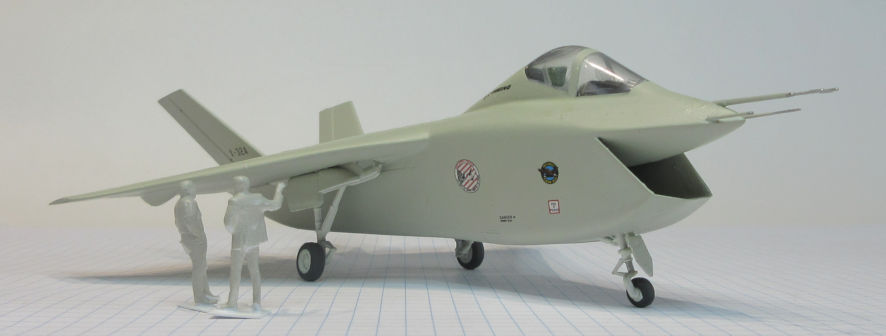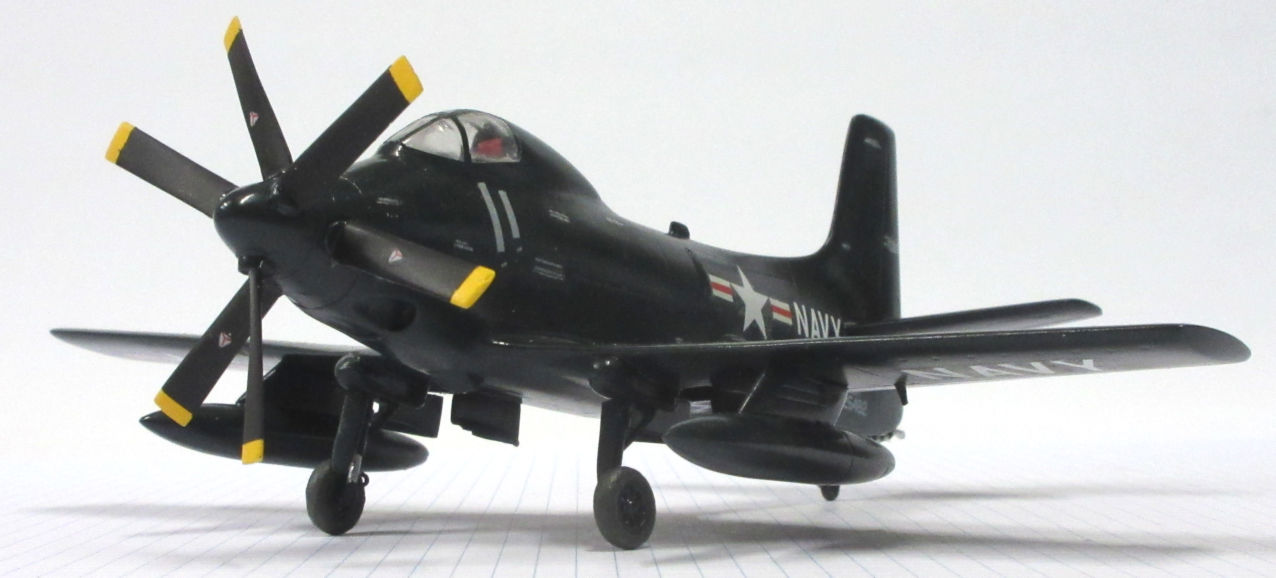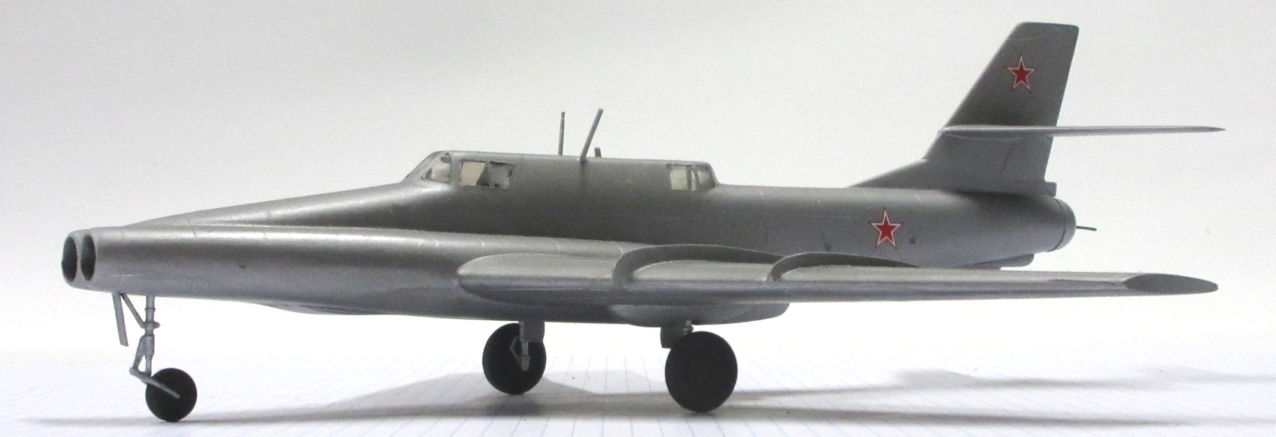Experimental Attack Aircraft
Boeing X-32 – Douglas XA2D – Ilyuhin Il-40P

Some military aircraft are designed specifically to attack targets on the ground so their shape and size is dictated by that function. Sometimes the resulting aircraft make it into production and sometimes they don’t. Let’s look at three attack aircraft that didn’t make it past the experimental stage.
Boeing X-32 in 1/72 by Italeri
This aircraft was called a ‘concept demonstrator’. It was Boeing’s entry in the Joint Strike Fighter competition which Lockheed Martin won with their X-35, which became the F-35. Two X-32s were built, a conventional take-off and landing aircraft, the X-32A, and a X-32B STOVL (Short Take-Off and Vertical Landing) version. The contract for these aircraft was awarded in 1996 and they were unveiled in December 1999. They were test flown in competition with the X-35 between September 2000 and July 2001 but the Lockheed Martin aircraft was selected for production. The X-32A was then transferred to the National Museum of the United States Air Force and the X-32B to the Patuxent River Naval Air Museum.
This model was made using the Italeri kit which was first published in 2000 and has since been reissued by the same company and by Revell and Tamiya. It was a simple kit to make straight from the box. The extensive build review in Modeling Madness says ‘this is the kind of kit that even a beginner could build with no real problems’. The review on the Fine Scale Modeler website says that this is a reasonable model too. On the other hand, the review on Rob de Bie’s scale models website highlighted all kinds of problems in making this model and how he gave up entirely when he found that the Italeri kit shape and the shape in Boeing drawings did not match very well. My feeling is that there is only one aircraft that looks anything like a X-32 so some differences in wing platform are a minor problem.
Douglas XA2D in 1/72 by Mach 2
The United States Navy issued a requirement for this aircraft in 1947. The turboprop engine was required because they were more fuel efficient then pure jet engines and aircraft powered by them could operate from smaller aircraft. The A2D was similar in many ways to the Douglas AD Skyraider but the turboprop engine was twice as powerful as the piston engine in the AD so many alterations were necessary. Twelve A2Ds were built and the first one made its maiden flight in March 1950. However, serious problems with the turboprop engines, the Navy’s decision to phase out smaller aircraft carriers and better pure jet aircraft that were being designed led to cancellation of the A2D program. All but one was lost in accidents or scrapped and it is on display at the San Diego Air & Space Museum.
Perhaps because of its shape this obscure aircraft has been a fairly popular subject for kit makers. First there were vacform kits from Rareplanes and Airmodel, then the Merlin Models kit of 1994, the Anigrand resin kit of 2005 and the Mach 2 kit of 2006. I made this model from the Mach 2 kit and, boy, was it hard work and I not really happy with it. No need to worry, however, you can forget about all that other rubbish and get yourself the new Clear Prop kit which is, according to Hyperscale, ‘a very impressive effort’ with many advantages, optional parts and no disadvantages.
Ilyushin Il-40Pin 1/72 by Amodel
This aircraft was designed as an armoured, jet powered ground attack aircraft to follow on from the World War 2 Ilyushin Il-2 and Il-10 ground attack aircraft. Design studies were begun in 1950-51 around an armoured box for the two crew members and two jet engine sin pods on the fuselage sides. The first prototype flew in 1953 and was generally successful except from problems when the nose guns fired and caused the engines to flame-out. To resolve this problem the aircraft was redesigned with the engine intakes extended to the nose and other refinements. This revised version first flew in February 1955 and it was soon ordered into production. However, a radical change in Russia’s close support doctrine led to cancellation of the project in 1956.
This model was made from the Amodel kit, and anyone who has made one of their kits knows that they always put up a fight before a good model can be made from them. Amodel offer the original Il-40 with the shorter engine intakes or the Il-40P with the elongated ones and I guess the have the same issues. The only other option is a slightly older resin kit from Unicraft Models which I haven’t seen. A youtube unboxing shows you what you get in the kit, the Cybermodeler review says it’s good if you know what you’re doing and the review on the IPMS/USA website puts it concisely when it says ‘You can make a nice model from this kit but you’ll have to work for it!’.



